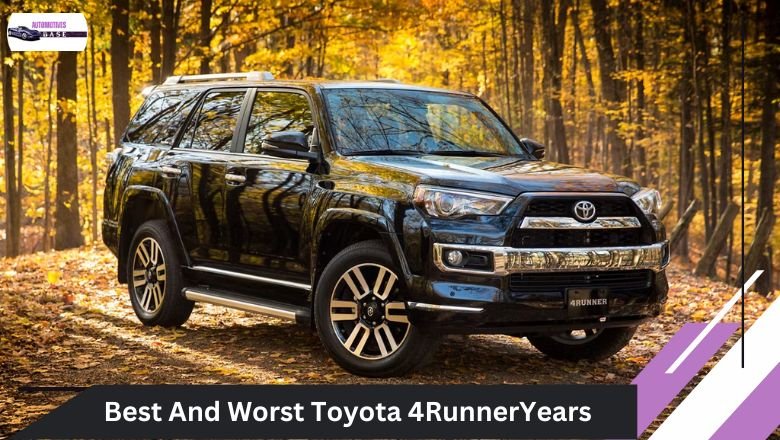The Toyota 4Runner has long been a staple in the world of SUVs, known for its rugged durability and off-road capabilities. The 4Runner has garnered a loyal following of enthusiasts who swear by its ability to conquer any terrain with a reputation for being dependable and versatile.
With great popularity comes great scrutiny, as not all 4Runners are created equal. In this article, we delve into the world of Toyota’s beloved SUV and explore both the best and worst Toyota 4Runner Years. Join us as we navigate through the highs and lows of one of Toyota’s most iconic vehicles from impressive performance on challenging trails to potential pitfalls that may leave owners frustrated.
Toyota 4Runner Generations
The first-generation Toyota 4Runner, produced from 1984 to 1989, played a crucial role in establishing the compact SUV market. It set the foundation for future models in the lineup with its rugged design and impressive off-road capabilities. The limited available data and its age have led to this generation not being included in current ratings despite its significance.
Each subsequent generation of the Toyota 4Runner has built upon the legacy of the original model, incorporating modern features and advancements while maintaining its reputation for durability and versatility.
The 4Runner has continued to be a popular choice for those seeking a capable and reliable SUV that can handle both on- and off-road adventures from the second generation to the present-day models. IIts impact on the SUV market and influence on later generations cannot be overlooked while the first-generation may not be part of current ratings.
| Generaions | Years |
|---|---|
| 2nd Generation (N120) | 1990-1995 |
| 3rd Generation (N180) | 1996-2002 |
| 4th Generation (N210) | 2003-2009 |
| 5th Generation (N280) | 2010-Present |
Toyota 4Runner Best, Neutral, and Worst Years
Factors:
- Owner-reported reliability (surveys)
- Annual maintenance costs
- Safety ratings
- Consumer Reports reliability scores
- Consumer Reports owner satisfaction scores
- NHTSA recalls, investigations, and complaints
- Edmunds owner ratings
- JD Power owner ratings
- Kelley’s Blue Book (KBB) owner ratings
- VehicleHistory owner ratings
- Cars.com owner ratings
Ratings from all the sources mentioned above is illustrated in this graph.
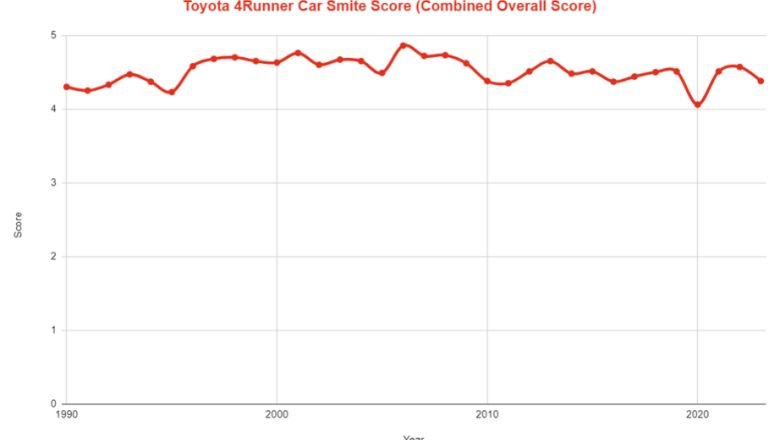
Best, Worst and Neutral Years are shown in the table below:
| Generation | Best Years | Neutral Years | Worst Years |
|---|---|---|---|
| 2nd Generation (N120) | 1993 | 1990 1992 1994 | 1991 1995 |
| 3rd Generation (N180) | 2001 | 1997 1998 1999 | 1996 2000 2002 |
| 4th Generation (N210) | 2006 2007 2008 | 2003 2004 2009 | 2005 |
| 5th Generation (N280) | 2012 2013 2015 2019 2020 2021 | 2014 2017 2018 | 2010 2011 2016 2020 2023 |
Neutral years in the analysis of the 4Runner are those where the vehicle did not necessarily excel or underperform, but maintained a consistent level of quality and reliability. These years might not have received the highest accolades but were still considered a solid choice for consumers looking for a dependable SUV.
It is worth considering that factors like NHTSA recalls can impact the ratings of a vehicle, with more recalls indicating lower reliability and subsequently affecting its score.It is important to assess various aspects such as performance, safety features, technology advancements, and customer satisfaction when delving into each model year in detail.
Potential buyers can make informed decisions about which specific model year aligns best with their preferences and requirements by examining these factors closely.
Best And Worst Toyota 4Runner Years 2nd Generation (1990-1995)
The second-generation Toyota 4Runner, introduced in 1990, marked a significant evolution in the SUV’s design and capabilities. This iteration of the 4Runner also focused on enhancing comfort and equipment levels, catering to a broader range of consumers while maintaining its off-road prowes.
The shift towards greater comfort and amenities represented a departure from the vehicle’s earlier rugged and utilitarian image, appealing to those seeking both adventure and refinement in their SUV experience.
The second-generation 4Runner offered a more versatile driving experience, suitable for both urban commuting and outdoor exploration with improved technology and features. The blend of rugged durability with enhanced comfort made this model popular among drivers looking for a reliable and capable SUV that could handle various terrains while providing a comfortable ride for everyday use.
The Best Years: 1993
The 1993 model year certainly made a mark with its exceptional mechanical reliability, setting it apart from previous years. Owners reported a noticeable decrease in problems, particularly with issues like faulty exhaust systems and electrical glitches being significantly reduced. This improvement in reliability contributed to higher satisfaction scores among owners of the 1993 models.
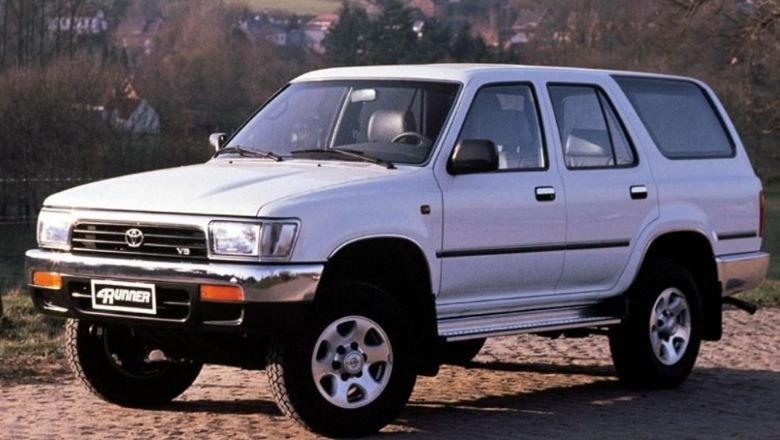
The absence of common mechanical problems in the 1993 model year played a key role in boosting customer satisfaction levels. Owners were able to enjoy their vehicles with more peace of mind and confidence in their car’s performance with fewer reported issues.
The positive feedback from owners regarding the improved reliability of the 1993 models is a testament to the success of addressing and resolving past mechanical issues.
The Neutral Years: 1990, 1992, 1994
The 2nd generation of the 4Runner, starting from its initial release in 1990, faced some common early adaptation issues like minor electrical faults and teething problems with the new 4WD system. It set a solid foundation for future models to build upon despite these challenges.
In 1992, cosmetic updates such as modular headlamps and one-piece front bumpers were introduced, although this model year did not particularly stand out in terms of mechanical reliability.The introduction of side-impact beams in the 1994 model aimed to enhance safety features, but unfortunately, there was a noticeable increase in reported engine problems during this time.
This led to a somewhat neutral standing for the 1994 model year of the 4Runner. Each iteration of the 2nd generation contributed valuable lessons and improvements for Toyota’s popular SUV lineup while there were some bumps along the road in terms of mechanical issues.
The Worst Years: 1991, 1995
The 1991 model of this car faced significant challenges with premature brake wear and a faulty cooling system, which contributed to overheating issues. These problems led to a lower reliability rating for the vehicle that year. In 1995, although safety enhancements were made, new issues arose such as transmission failure and excessive oil consumption.
These issues increased maintenance costs and resulted in a lower rating for the model year.It is important for potential buyers to be aware of these historical problems when considering purchasing a used vehicle from these model years.
Conducting thorough research and potentially getting a professional inspection before making a purchase can help mitigate these risks and ensure a more reliable driving experience.
Best & Worst Years for Toyota 4Runner 3rd Generation (1996-2002)
The 3rd Generation 4Runner, launched in 1996,brought about a notable evolution for the SUV segment. With the addition of airbags for both the driver and passenger, Toyota showcased a commitment to safety that set a new standard for the industry.
The modernized design and incorporation of advanced features further solidified the 4Runner’s reputation as a top contender in the SUV market.This generation’s enhancements not only improved safety but also elevated the overall driving experience for consumers.
The introduction of more advanced features provided increased convenience and comfort, making the 3rd Generation 4Runner a sought-after choice for those looking for a reliable and well-equipped SUV. Its success paved the way for future innovations in the SUV segment, setting a benchmark for others to follow.
The Best Years: 2001
The 2001 model year truly stood out with its powerful V6 engine, offering a perfect balance between enhanced performance and fuel efficiency. This combination of power and economy made it a popular choice among consumers looking for a reliable and efficient vehicle.
The decreased instances of mechanical issues and impressive crash test ratings further solidified the positive reputation of the 2001 model.Owners of the 2001 model expressed high levels of satisfaction with their vehicles, praising its performance, safety features, and overall reliability.
The positive reviews and feedback from owners highlighted the success of this particular model year in meeting the needs and expectations of consumers. The 2001 model was a standout choice for those seeking a well-rounded vehicle that delivered on both power and safety.
The Neutral Years: 1997, 1998, 1999
The 1997-1999 models of vehicles offered consistent off-road capabilities, solid performance, and maintained a moderate level of reliability. they also did not suffer from any major pitfalls, which placed them in a neutral category among consumers while they may not have had any significant upgrades during this time period.
This stability in performance and reliability made them a popular choice for those looking for a dependable vehicle without the need for flashy features or extensive modifications.The 1997-1999 models were known for their durability and ability to handle various terrains with ease.
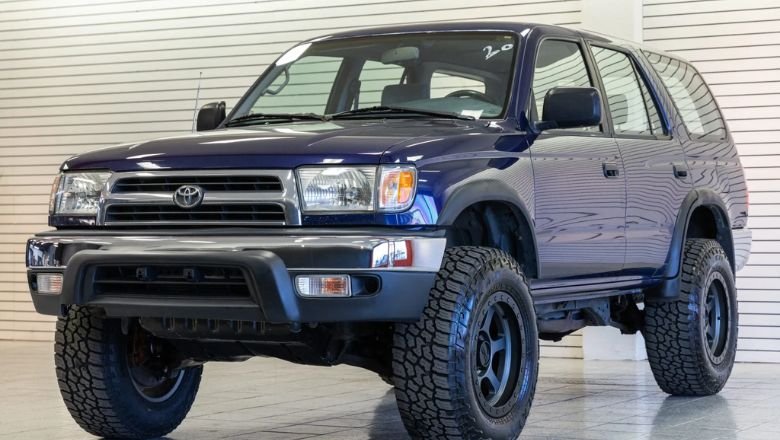
Their reputation for being reliable workhorses that could get the job done without much fuss appealed to many buyers who valued functionality over frills. Their consistency and solid performance made them a practical choice for individuals seeking a dependable vehicle for both on-road and off-road adventures while they may not have stood out in terms of innovations or advancements.
The Worst Years: 1996, 2000, 2002
It faced setbacks with multiple recalls tied to suspension and fuel system issues while the 1996 model of this vehicle boasted a strong safety score thanks to the inclusion of airbags. This ultimately led to a lower reliability rating for the car.
Moving on to the 2000 model year, enthusiasts were left disappointed as it marked the end of the 5-speed manual transmission option, a feature that many drivers valued for its engaging driving experience.
The 2002 model continued the trend of challenges with costly problems such as head gasket failure and transmission slipping. These issues resulted in high repair costs for owners, contributing to a diminished rating in terms of overall reliability.
Best & Worst Years for Toyota 4Runner 4th Generation (2003-2009)
Entering its 4th generation, Toyota made significant improvements to the 4Runner’s on-road performance while maintaining its exceptional off-road capabilities. The 2009 model year saw the discontinuation of the Hilux Surf, consolidating the focus on the 4Runner within Toyota’s lineup.
This move allowed Toyota to further refine and enhance the 4Runner’s design and features, making it a standout choice for both urban commuters and outdoor enthusiasts alike.Toyota has continued to fine-tune the 4Runner to strike a balance between comfort and ruggedness with each iteration.
The latest models offer advanced technology features, improved safety systems, and a more refined driving experience without compromising its legendary off-road prowess. As one of Toyota’s longest-running SUV models, the 4Runner has solidified its reputation as a versatile and reliable vehicle that can handle any terrain with ease.
The Best Years: 2006, 2007, 2008
The 2006 to 2008 models of the 4th generation truly stood out for their exceptional quality and innovation. Among these, the 2006 model particularly shone with its impressive 4.9 Car Smite score, reflecting its outstanding performance and reliability.
These years were renowned for their low incidence of reported issues, showcasing the meticulous engineering and attention to detail that went into crafting these vehicles. The introduction of advanced safety features during this period set a new standard for vehicle safety in the industry.
The inclusion of high-tech options like GPS navigation further enhanced the driving experience, making these models not only reliable but also cutting-edge in terms of technology. The 2006 to 2008 models represented a peak in the evolution of the 4th generation, offering a blend of quality craftsmanship, safety innovations, and technological advancements that set them apart from their predecessors.
The Neutral Years: 2003, 2004, 2009
The 2003 and 2004 models of the vehicle were praised for their durability and reliability, which are essential factors for many car buyers. Their fuel economy and lack of advanced tech features did leave something to be desired for those seeking a more modern driving experience.
The reputation of these models remained solid due to their strong performance and long-lasting nature despite these drawbacks.The 2009 model may not have introduced any significant upgrades, but it managed to uphold the brand’s reputation for steady performance with minimal reported issues.
This consistency in quality can be appealing to consumers who value reliability over flashy new features.
The Worst Years: 2005
The 2003 and 2004 models of the vehicle were indeed praised for their durability and reliability, which are essential factors for many car buyers. However, their fuel economy and lack of advanced tech features did leave something to be desired for those seeking a more modern driving experience.
The reputation of these models remained solid due to their strong performance and long-lasting nature.The 2009 model may not have introduced any significant upgrades, but it managed to uphold the brand’s reputation for steady performance with minimal reported issues. This consistency in quality can be appealing to consumers who value reliability over flashy new features.
Best And Worst 4Runner Years 5th Generation (2010-Present)
The fifth generation 4Runner has proven to be a popular choice among SUV enthusiasts, thanks to its rugged design and off-road capabilities. The addition of Toyota Safety Sense-P (TSS-P) as a standard feature in 2019 enhanced the appeal of this model by providing advanced safety technologies such as pre-collision system with pedestrian detection, lane departure alert, and dynamic radar cruise control.
The fifth generation 4Runner offers drivers peace of mind knowing that they are equipped with modern safety features designed to help prevent accidents and protect occupants with the inclusion of TSS-P. This commitment to safety combined with the 4Runner’s reputation for reliability and durability has solidified its position as a top choice for those seeking a versatile and dependable SUV for both daily commutes and outdoor adventures.
The Best Years: 2012, 2013, 2015, 2019, 2020, 2021
The Toyota 4Runner has seen remarkable progress in recent years, with the 2020 model standing out for its introduction of the Toyota Safety Sense-P (TSS-P) suite. This move not only elevated the vehicle’s safety standards but also contributed to increased owner satisfaction levels.
The incorporation of advanced safety features across all trims reflects Toyota’s commitment to enhancing driver and passenger protection.The 4Runner’s reputation for reliability has been further solidified by these technological advancements.
The 2020 model year has proven to be a standout in terms of both innovation and customer satisfaction with improved safety ratings and enhanced features.These developments have positioned the Toyota 4Runner as a top choice for those seeking a dependable and safe SUV option on the market.
The Neutral Years: 2014, 2017, 2018
Their consistent performance and reliability ratings are commendable while these years may not have seen any groundbreaking advancements. The reputation for reliability remained strong despite some minor issues such as occasional electrical glitches and paint quality complaints.
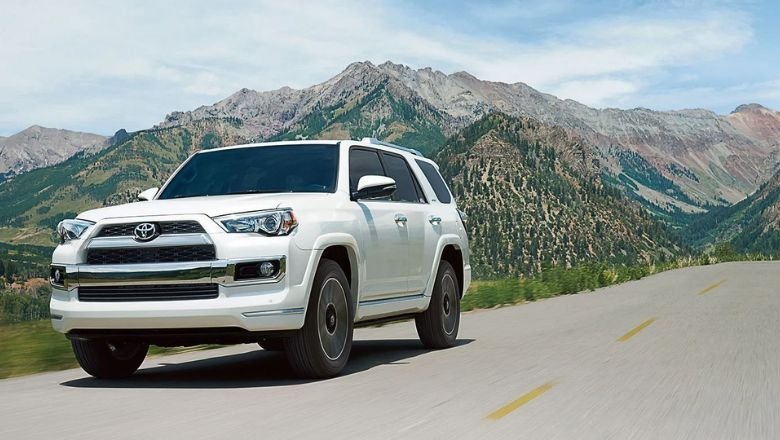
These years may not be considered the best in terms of innovation, but their ability to deliver consistent performance is a testament to their durability and dependability.It is important to recognize that even without major improvements, maintaining a steady performance and reliability score is a significant achievement in the automotive industry.
The fact that these years were able to uphold a solid reputation despite some minor hiccups speaks to the quality and craftsmanship of the vehicles during that time.Their reliability and consistency should not be overlooked when considering their value as dependable vehicles while they may not stand out as the best years in terms of features or design.
The Worst Years: 2010, 2011, 2016, 2020, 2023
It is important to acknowledge that every car model can have its share of issues, and it seems like certain years of this particular model have had some notable problems. The head gasket failures and faulty air conditioning systems in the 2010 and 2011 models are concerning, as these are critical components for a vehicle’s performance and comfort.
The higher number of recalls for airbag and seat belt issues in the 2016 model is also worrying, as safety should always be a top priority for car manufacturers.The 2020 and 2023 models seem to continue the trend of facing complaints and potential issues.
It is essential for manufacturers to address these concerns promptly to maintain customer trust while it’s not uncommon for newer models to have teething problems. Potential buyers should consider these factors along with other reviews and ratings before making a decision on purchasing one of these models.
Toyota 4Runner VS Toyota Venza VS Hyundai Elantra
The Toyota 4Runner is a rugged SUV with off-road capability and ample cargo space, perfect for adventures. The Toyota Venza offers a stylish design and a smooth hybrid powertrain for a refined, eco-friendly drive. The Hyundai Elantra is a compact sedan known for its affordability, fuel efficiency, and modern features, making it a practical choice for daily commuting.
Toyota 4Running Average Resale Value
The average resale values of the Toyota 4Runner are shown below:

Conclusion
The Toyota 4Runner has a rich history of reliable performance and off-road capability. Among the best years for the 4Runner are 2010 and 2019, known for their durability and modern features. Some of the worst years include 2003 and 2007 due to reported mechanical issues.
Choosing the best and worst Toyota 4Runner years depends on personal preferences and priorities. Before making a purchase, it is important to thoroughly research each model year to ensure it aligns with your needs.
How Many Generations Of 4Runner Are There?
The Toyota 4Runner has been in production for over 35 years, with the first generation introduced in 1984. As of now, there have been five generations of the Toyota 4Runner. Each generation has seen improvements and updates in terms of design, technology, and performance to meet the evolving needs and preferences of consumers
How Many Years Will a Toyota 4Runner Last?
The Toyota 4Runner is known for its durability and longevity, lasting well over 200,000 miles with proper maintenance. Many owners report driving their 4Runners for 10-15 years or more without major issues. Regular oil changes, routine inspections, and following the manufacturer’s recommended maintenance schedule can help prolong the lifespan of your vehicle.
https://automotivesbase.com/best-and-worst-nissan-sentra-years/

